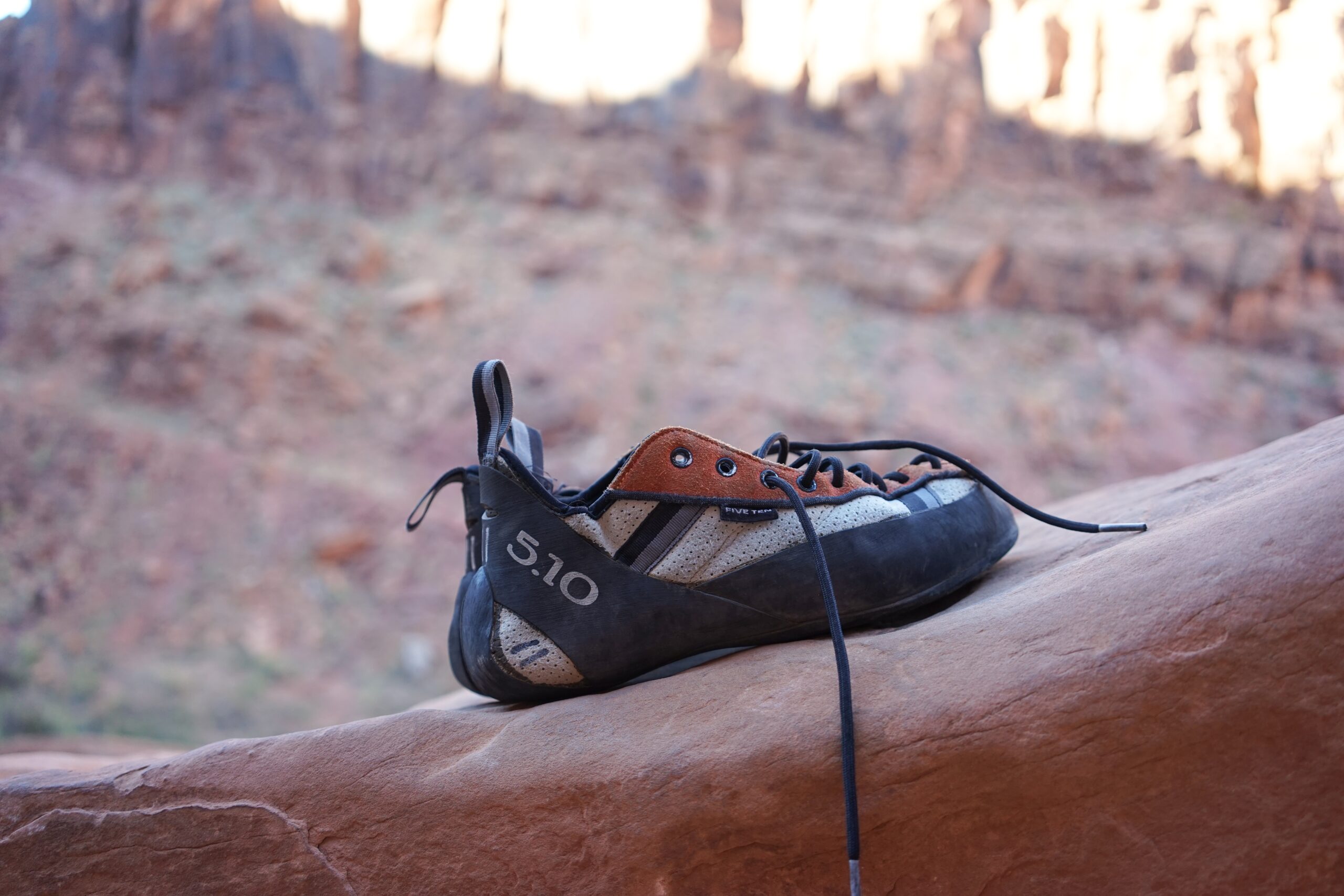Getting the Perfect Fit: The Art of Climbing Shoe Comfort

Climbing shoes, your trusted allies on the rocky ascents and challenging boulders. These shoes are like the Bat-suit for your feet. Just as Batman needs a perfectly fitting ensemble, your climbing shoes should be snug, like a second skin, ensuring that you are ready to conquer any rock face. This article delves into the specifics of achieving that perfect climbing shoe fit while also offering insights on their initial break-in, stretching them out when needed, their lifespan, and where to find the ideal pair.
How Tight Should Climbing Shoes Be:
There’s a cardinal rule in the realm of this kind of shoes, and it’s quite simple: they should be snug, not agonizing. The climbing shoes must embrace your feet, especially your toes, without causing unbearable discomfort. When shopping for climbing shoes, seek a fit that eliminates any voids within the shoe. Your toes should be comfortably bent, not painfully cramped. Your heel should sit snugly, without budging when you rise on your tiptoes. Keep in mind, that finding that Cinderella-like fit may take some trial and error, so don’t hesitate to experiment with various brands and models.
How to Break in Your Shoes:
New climbing shoes can be stiff, like a board. To make them more supple, start with short climbing sessions or bouldering. Over time, the shoe’s materials will soften and conform to your foot’s contours. Some climbers opt for slightly dampening the shoe with a cloth or a spritz from a spray bottle, aiding the stretching process. Don’t forget to take breaks during your climbing sessions, allowing your feet to breathe and minimizing discomfort.
How to Stretch Out Your Shoes:
If your climbing shoes feel slightly too tight, you can help them stretch a bit. One common method is to use a shoe stretcher, which can gradually widen your shoe’s shape. Alternatively, try wearing your climbing shoes at home for short periods, with thicker socks if necessary. Be patient; stretching climbing shoes can take time. Remember, you can always ask a professional cobbler for assistance if needed.
Climbing Shoe Longevity:
The lifespan of climbing shoes varies, dependent on factors such as how frequently they’re used, the type of climbing you engage in, and the shoe’s quality. As a rule of thumb, climbing shoes can last anywhere from six months to several years. More aggressively downturned shoes may wear out sooner due to added pressure in specific areas. Keep an eye on the rubber sole; when it begins to thin or the shoe no longer performs optimally, it’s time for a replacement. Good care, including regular cleaning and avoiding excessive moisture, can extend their life.
Finding Your Perfect Pair of Climbing Shoes:
When it comes to acquiring, a few options are available:
- Specialized Climbing Shops: These stores boast experienced staff who can aid you in selecting the right fit and style for your climbing requirements.
- Online Retailers: If you’re already acquainted with your size and preferred brand, the internet offers a broader selection. However, ensure you read reviews and familiarize yourself with return policies.
- Second-Hand Gear Outlets: Those shoes can be pricey, making the purchase of used ones an economical alternative. Nonetheless, exercise caution regarding their condition and hygiene.
- Brand Websites: Most leading climbing shoe manufacturers have their own websites where you can find the latest models and often discover detailed sizing guides.
In conclusion, achieving the perfect fit with your climbing shoes is pivotal for performance and comfort. Take your time, explore the journey of finding that ideal fit, and recognize that breaking them in is all part of the experience. Keep an eye on your shoes’ condition, and they’ll accompany you on many exhilarating climbs. Happy climbing!






